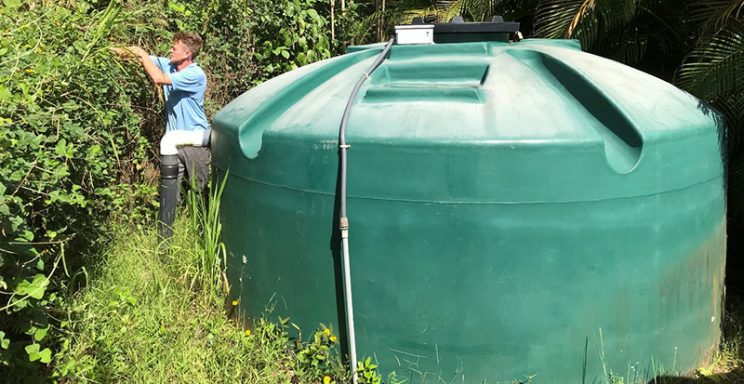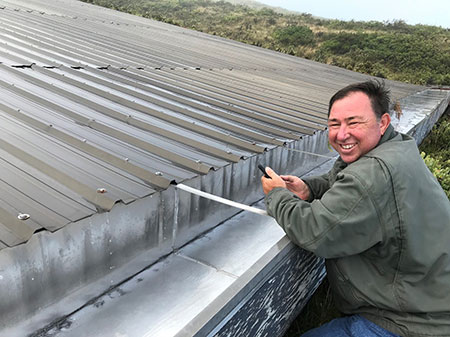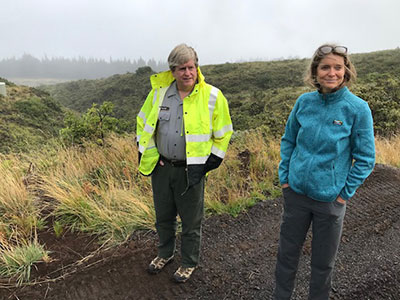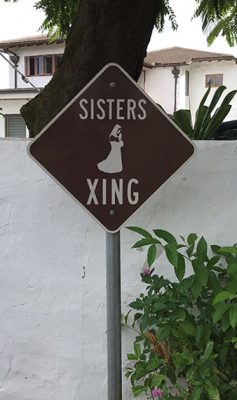
By Angela Hengel, regional field manager, Community & Environmental Services
Join Angela Hengel, regional field manager, for a firsthand look at how Hawaii circuit riders help small water systems build their capacity to provide safe water in accordance with the Safe Drinking Water Act.
Circuit rider programs are unique in RCAC’s world. Unlike project based technical assistance programs, the circuit rider program employs a team of locally based circuit riders that travel from community to community to target work one-on-one with local utility operators. In a circuit rider program, rural utilities receive routine, in-depth, recurring training visits from circuit riders who are experienced and knowledgeable in small system operations and maintenance (O&M), utility management, Safe Drinking Water Act (SDWA) regulations and community relations. The work, often referred to as “over the shoulder,” focuses on building operators’ capacity to manage facilities effectively (both technically and financially) so that they can build sustainability and meet compliance with the SDWA.
During September, I had the privilege to spend a week on the road, immersed in RCAC’s Hawaii circuit rider program, which has been active in Hawaii since 2004. The Hawaii State Department of Health (DOH) funds the program, which covers Kauai, Oahu, Molokai, Lanai, Maui and the island of Hawaii and provides valuable technical assistance to rural water systems. Many of these communities are extremely remote, and subject to variable road conditions and seasonal inclement weather.
My trip started on a Tuesday morning in Maui where I met with RCAC circuit rider Kevin Baughman. Our first site visit took us to Kahakuloa where we met in town with Jace, a system operator, who led us up the hill on what seemed like Mr. Toad’s Wild Ride. A two-lane road quickly narrowed to a single lane with occasional turnouts. We made our way through a series of blind switch backs that offered scarcely enough room for one car and absolutely no view of oncoming traffic. With nothing on one side except a long drop down we managed to sneak through the switchbacks without coming nose-to-nose with an oncoming vehicle. After we arrived, Jace advised me that the best way to navigate the switchbacks is to go as fast as possible to decrease the chances of a head-on collision. He was probably right, but I wasn’t brave enough to take his advice.

We visited a well house where I learned about the daily struggle against invasive plants and grasses that continuously try to overtake the drinking water structures. Jace was happy to tell me how Kevin recently assisted him with flushing and disinfecting the system’s new pump. For our next stop we visited a stream diversion, a small dam that diverts a portion of stream flow to the water system. Working in the cool shaded stream was a pleasant escape from the heat and humidity.
The next day we rendezvoused with fellow circuit rider Barry Pollock and Gail Baber, rural development specialist III. We headed up the mountain to meet with Rusty, the water operator at Haleakalā National Park for a water system tour. I was advised to bring something warm to wear, which I hadn’t thought to pack. (Who needs warm clothing in Hawaii?) Fortunately, I had a hoodie that I brought for the plane ride. It was barely enough to keep my teeth from chattering in the wet and blustery 48-degree weather. It was worth the cold however, to see the catchment system the park uses as a water supply. The one-acre rain catchment system supplies more than 4,000 gallons of water per day, more than enough for the park’s 3,000 daily visitors.

Thursday started bright and blurry with a 4 am wakeup to catch the 6 am flight to Molokai. This was my first trip in a single engine commercial plane. It turns out our pilot was also our ground crew, baggage handler and flight attendant. On Molokai we visited two systems. Our first stop was to the Molokai Kawela Plantation Homeowners Association where I learned from the association owner that Kevin and former RCAC staff helped them transition from using contract operators to managing the system themselves. With RCAC’s help, they navigated their way through the complicated process of becoming a self-reliant system. Our second stop was to meet Department of Hawaiian Homelands (DHHL) Molokai water system operators who supply water to one-third of the island. The two operators I met explained that Kevin provided the training they needed to achieve certification DOH requires.
My final day started with another early flight, this time to Honolulu to meet with Barry to visit three systems he works with. Our first stop was at Kunia village, a community that has been working with RCAC housing, loan fund and environmental staff for almost 20 years. The village consists of 82 renovated or new historical and affordable agricultural worker rental homes that RCAC, along with partner Hawaiian Agricultural Research Center, helped to preserve after Del Monte closed its operations.

After lunch in Honolulu with RCAC board president Nalani Fujimori Kaina, we headed up to the Saint Stephen Diocesan Center in Kaneohe. Nestled away in the Ko’olau Mountain Range, it was probably one of the loveliest work settings I have ever seen. The center operates a small water system on its property, which serves residences, offices and dormitories. Barry introduced me to the operator who showed us the system’s newly installed chemical feed system and, because timing is everything, a small leak that sprung up before we arrived!
We finished the day at Poamoho Camp where we met with the community’s property manager and learned about the many challenges the Camp faces in its quest to receive funding for a new water system. The need really hit home when it recently experienced a fire at the community center but had no fire hydrants for the firefighters! I am grateful to know that Barry is there to help guide the Camp through the complicated process of upgrading its system.
My experience with the Hawaii circuit riders was extremely valuable. It opened my eyes to the islands’ uniqueness and the challenges that the circuit riders deal with daily—flying to their site visits, barely navigable roads, temperature extremes and long days. On the positive side, what I saw and heard from the communities made my heart soar with pride. Every community I visited thanked me profusely for the work that RCAC circuit riders have done for them. To hear from the managers and operators themselves how Kevin was able to troubleshoot a complicated electrical system or Barry was able to get them funding for a new tank—those are the stories that make our work worthwhile.
**Feature photo caption: Jace, system operator, clearing the vegetation in Kahakuloa.
Photos taken by Angela Hengel, RCAC.
